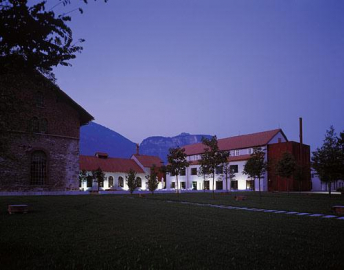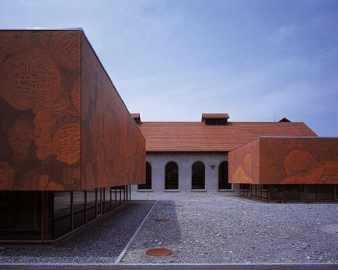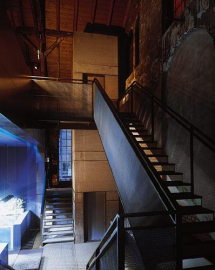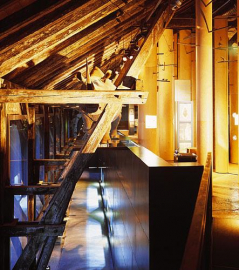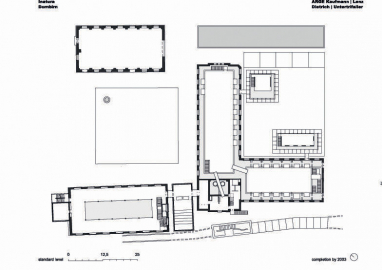Inatura - Natural History Experience
Due to the location on a river, an artificially constructed canal, the site on which the factory had existed since 1827 was build upon as early as the 16th century. Towards the end of the 19th century the business concentrated on the construction of turbines and hydraulic power plants and new buildings were repeatedly erected and old ones demolished until its final closure in 1984. Immediately after closure the town authorities entered into negotiations to purchase the property. Until today remained preserved the assembly shed (1893), the old (1858) and the new foundry (1897), the turnery (1863) and the smithy (year of construction 1836/1892). In order to become fair the requirements of a modern museum enterprise, the premises had to be adapted and supplemented. The former turnery and the foundry were connected, so that the visitors can reach all ranges of the exhibition covered.
Now a cube between the two buildings makes it possible to walk from the entrance hall into the exhibition area and offers at the same time place for a film and a conference room. In the second annex are the marketing areas for the café. Behind the foundry two pavilions from oak wood were created as offices for the scientist, who are supplemented by the following planting and water basin and the existing property wall to the museum garden. With the motive of the before-hung screens of the two boxes, sun blinds printed with enlargements of microscope images of rust particles, these point again the purchase to the old area. The industrial character of the existing buildings is accepted, which is again-reflected among other things in the Corten steel used for the external facades.
From this reason also the two cupola furnaces become a part of the exhibition. All surfaces within the museum range are left and the new exhibition table is separated clearly from the existence and with clear orientation possibility are set off in the original condition. The project on the factory area is a successful example, both for the connection of modern architecture with historical buildings, and for the transition of an industrial area into a public museum with city garden, for the cultural and infrastructural impulse of the city.

